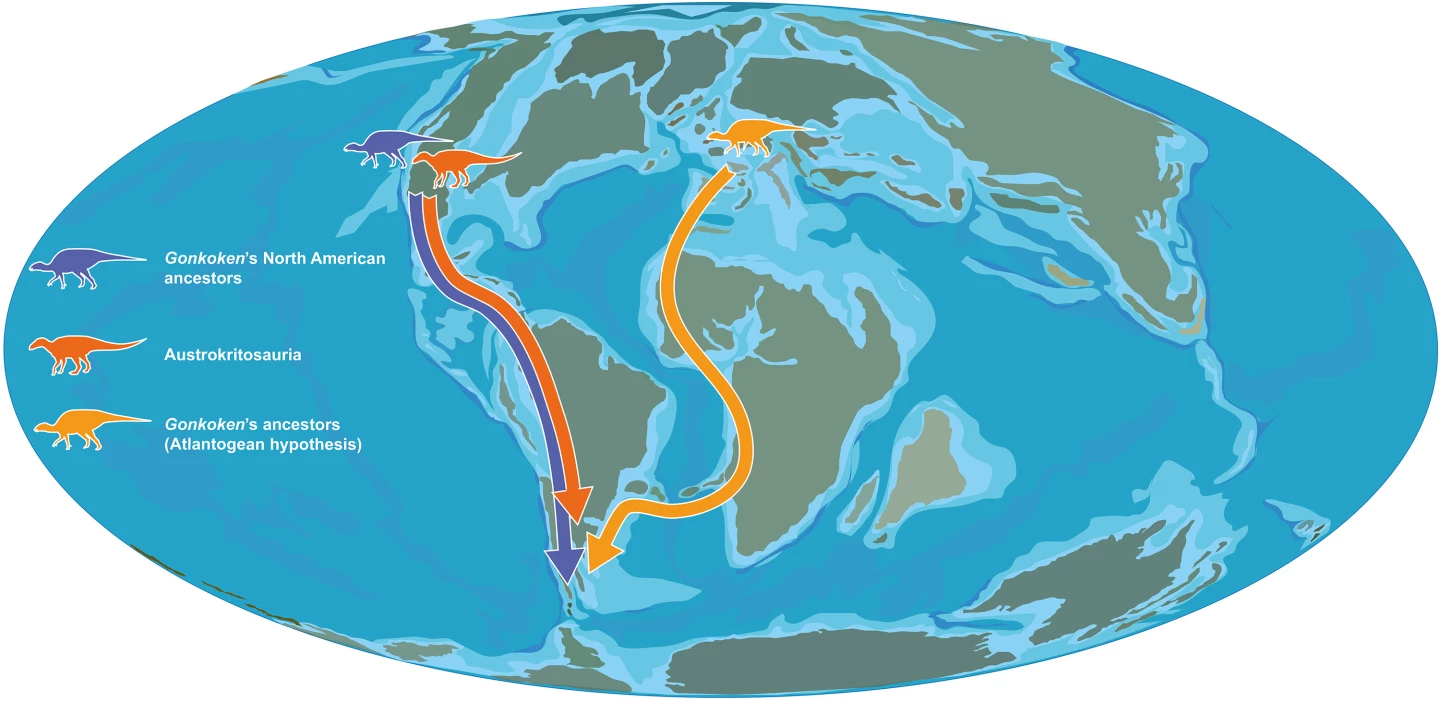Scientists have been able to name a new species of dinosaur that roamed the river plains of Chile’s Patagonia some 72 million years ago.
From more than 100 fossils painstakingly excavated from a site near tourist hub Torres del Pain, in Chile’s south, researchers from the Chilean Antarctic Institute (INACH) and the University of Chile have finally been able to determine that the bones belonged to not just several animals but that they were a new, more ancient species of hadrosaur.
The original discovery was made by INACH paleobiologist Marcelo Leppe a decade ago when he was searching for plant fossils in the Río de las Chinas Valley. He teamed up with university paleobiologist Alexander Vargas to reconstruct the complete and complex skeleton of what would prove to be a new hadrosaur.
The duck-billed herbivore, which has been named Gonkoken nanoi, was believed to have weighed more than a ton and stretched more than 13 ft (or around 4 m) from nose to tail. But what’s most remarkable is its primitive aspects, older than other hadrosaurs so far described in South America and is the first of its kind anywhere in the Southern Hemisphere.
"An interesting aspect is that Gonkoken nanoi is not an advanced duckbill dinosaur, but rather an older transitional duckbill lineage: an evolutionary link towards advanced forms," said Vargas. “Their presence in such distant southern lands is surprising: all the possibilities to understand how their ancestors got there involve large expanses and marine barriers that blocked the passage of most terrestrial species.”

While the plant-eating hadrosaurs were common towards the end of the Mesozoic Era, this one appears to be an ancestral species, with no other relatives in its Genus, making it even more curious as to what path it took to make it so far south.
"There are many questions that arise from the new findings," Leppe said.
G. nanoi is the second recently discovered new species in the region, following Stegouros elengassen, an ankylosaur named in December 2021.
The new species’ name comes from the Aónikenk words "gon," which means similar, and "koken" for wild duck or swan. "Nanoi" is a tribute to Mario "Nano" Ulloa, a former rancher who aided the scientists on the expedition.
“These were slender-looking dinosaurs, which could easily adopt either a bipedal or quadrupedal posture to reach high-altitude and ground-level vegetation,” said Vargas. “They had large, flattened-end beaks, resembling a duck, but with sharper edges and huge dental batteries in their jaws, made up of numerous rows of hundreds of teeth with which they could grind, crush, and cut through virtually any plant material, including wood. They also had social behavior and took care of their young."
Because G. nanoi was able to make it so far south, it most likely had little competition with other, more advanced duck-billed herbivores, so could exploit the vegetation right until the dinosaur mass extinction. The researchers believe they last shared an ancestor with North American forms around 91 million years ago (during the Turonian period).

“Gonkoken nanoi is an important dinosaur for Chile, the fifth and second named and exclusive to the Valle de Las Chinas,” said Leppe. “The Valle de Las Chinas, Cerro Guido and the research that is being developed in that place will continue to bear fruit and open up interesting questions such as what type of relationship existed between America and Antarctica at the end of the Age of Dinosaurs, given that we also have other manifestations of life such as plants and invertebrates, and all that great biological wealth that is trapped in at least 20 million years from the end of the era of the dinosaurs”.
The research was published in the journal Science Advances.
Check out a lengthy presentation on the findings below. While it is in Spanish, it does feature some excellent 3D renders of the dinosaur and a rather amazing animation of how scientists believed they moved and drank from the river.
Source: University of Chile







